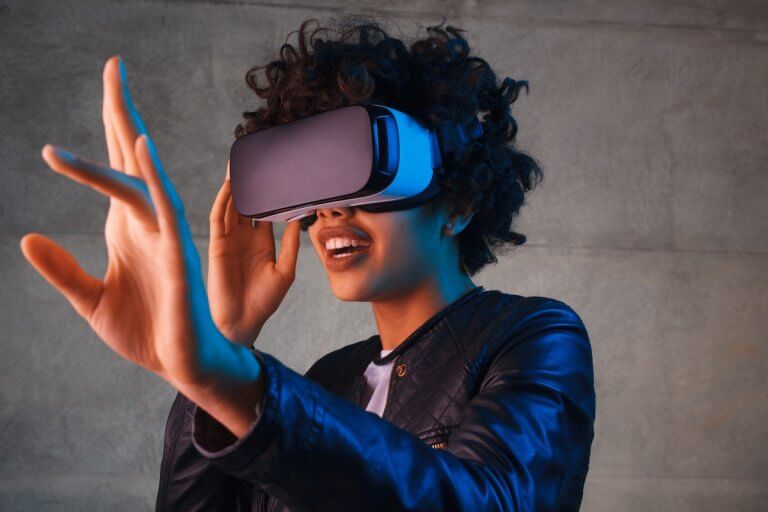
“Every once in a while, a new technology, an old problem, and a big idea turn into innovation.” — Dean Kamen
Humanity’s medical and technological advancements, when placed within the wider context of human history, are astounding. In less than 200 years — or 0.001% of humanity’s time on earth — we’ve invented myriad methods for detecting, treating and even eradicating diseases that once wiped out our ancestors by the millions.
Yet medical technologies like X-ray imaging, anaesthesia, vaccines, immunotherapy and countless others may soon be considered the advancements of old. Promising new technologies like augmented reality (AR) and virtual reality (VR) are projected to reshape every aspect of our lives, from shopping and exercising to learning and working.
The phrase “virtual reality” often conjures images of gamers sitting in front of a screen. But this technology has hundreds of practical applications beyond entertainment, and it’s particularly useful for STEM students of all backgrounds and disciplines.
Indeed, VR is already changing our world and increasing our aptitude for diagnosing and treating disease. Neuroscientists at Cambridge are currently testing VR’s efficiency at detecting navigational problems in patients prone to developing Alzheimer’s. Some mental health professionals have used VR to treat patients with post-traumatic stress disorder (PTSD), depression, anxiety and more. Doctors and surgeons around the world rely on VR to soothe and distract anxious patients, plan complex surgeries, and rehabilitate stroke victims and those with head injuries.
The times, they are a-changin’
Technologies like AR and VR may seem new, but in fact, they’ve been around for decades. Medical professionals and engineers alike have used VR since at least the 1990s.
As VR continues to evolve and become more commonplace, higher education and industry are catching up. Undergraduate degrees in AR and VR are now available at select UK universities, including the University of Portsmouth and Solent University. The University of London also offers a Master’s programme in Immersive Technology.

Limitless potential! Source: Shutterstock
AR and VR degree programmes are certainly not exclusive to UK higher education. Universities around the world are catching on, with the US at the forefront. Dozens of universities from Seattle to Sydney now offer VR design courses, equipping students with the theoretical and practical tools to develop this emerging EdTech to its full potential.
How AR and VR are used in STEM education and industries
Science
Why send astronauts on risky expeditions in space when free apps like Titans of Space allow students to explore the solar system? Why cut open a cadaver when students can “walk around” inside the human body with Anatomyou? Why buy a set of microscopes when students can tour human cells using MoleculE VR?
While space exploration, anatomical dissection, and microscopic imaging are commonplace and certainly vital, the applications of AR and VR in science are unlimited.
Technology
In order for VR technologies to realise their full potential, we need fully-trained, highly-skilled virtual reality world designers. Universities across the UK have added virtual reality systems design courses to their curricula, including Staffordshire University, University of London and Solent University, among a handful of others.
In particular, the Virtual Environments and Computer Graphics Group (VECG) at University College London, which manages the university’s immersive virtual environments laboratory, explores the real-world issues involved with successfully implementing VR technologies within the wider population. Students of the course will explore ways to enhance rendering, visibility and realism within virtual worlds to make them effective and accessible for ordinary people.
Student-Centered Learning in the age of VR, what the students say and a study of implementation: #INTC5160https://t.co/K8D1zjCnC5
— Verne Joyce (@joycevMAIT) 5 March 2019
In VECG’s own words, ‘our ultimate goal is a theory of virtual reality: to make it “work” in a given application context and with given resources.’
Engineering
Aeroplane and car manufacturers, including Boeing, Peugeot and Ford, already have virtual reality centres where they design and test prototypes. This allows manufacturers to address potential flaws before the designs reach the factory floor, cutting costs, reducing development time, and increasing collaboration among everyone involved in the process.
VR also allows engineers to deconstruct their prototypes to study and experiment with their individual components, a process that’s tricky at best with physical models. The UK’s leading architect firms are also implementing VR technologies in their design processes as well as client communication and coordination.
Mathematics
The University of Almería in Spain has created a VR programme called NeoTrie VR, which allows maths students to create 3D geometric shapes and models which they can then alter within the virtual world.
VR also provides the ultimate space for creativity and innovation, allowing maths students to bend the laws of physics to create ‘non-Euclidean’ virtual worlds. Industry leaders predict that such experimentation may reveal new mathematical processes and lead to brand-new discoveries about our world.
Looking ahead: full immersion and implementation

What next for EdTech? Source: Shutterstock
How long will it take for these technologies to become commonplace in education and in our daily lives? Only time will tell.
But it’s important to remember that these emerging educational technologies are still evolving; experts predict that it could take dozens of years before we achieve full immersion. Even so, UK schools are already investing in these new technologies, and UK universities are revising their curricula to meet the demands of a rapidly-developing industry.
Not only can AR and VR revolutionise the learning process for STEM students of all ages, but it can also be used to train new hires. Well-taught students then become well-trained employees who possess the skills needed to change our world in ways our ‘Euclidean’ brains can only imagine.
Liked this? Then you’ll love…
The magic of virtual reality university tours
Is virtual reality therapy going to be the next big thing in universities?







